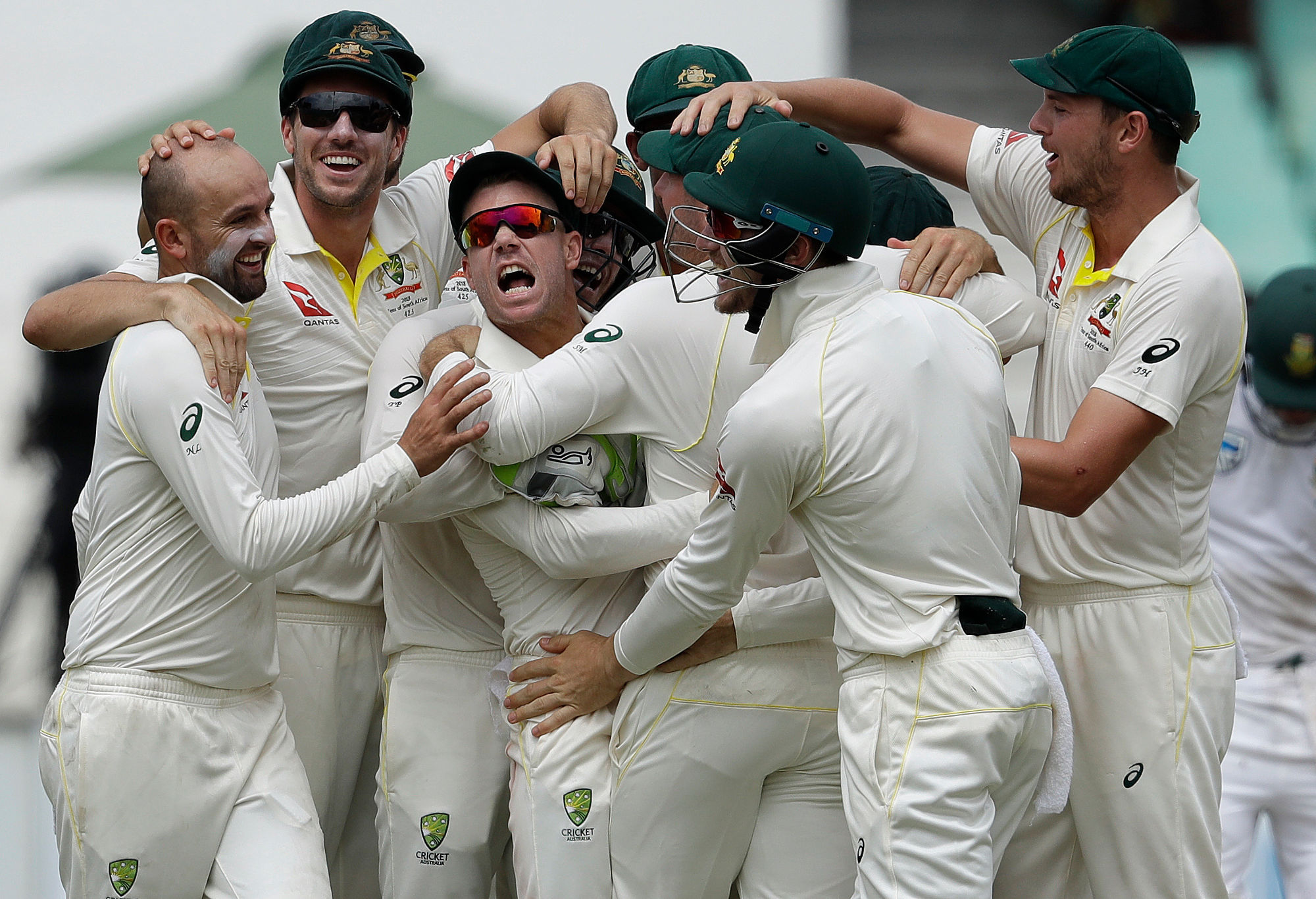Australia hit rock bottom 16 months ago when South Africa destroyed them in Hobart but their win over the Proteas in Durban yesterday confirms they are on an upward trend.
The 4-0 loss in India in 2013 was horrific, as was the 3-1 Ashes defeat in 2010-11, but arguably the lowest point for Australia in the modern era was the back-to-back Test floggings at home to South Africa in late 2016.
That series loss was all the more painful for Australia coming as it did directly after both a 5-0 humiliation in ODIs in South Africa, and a 3-0 caning in Tests in Sri Lanka.
Losing by an innings and 80 runs in Hobart triggered sweeping changes to the Australian line-up and set in motion a major reversal of their fortunes in the longest format.
Since that debacle in Tasmania, Australia have a fantastic 11-3 win-loss record in Tests. In that time they have gone unbeaten in nine Tests at home, starting with a comfortable win over the Proteas, followed by three hammerings of Pakistan, and four big wins over England.
It is on the road, however, where they have made their biggest improvement. First they competed strongly in India, placing themselves in a decent position to win that series midway through the fourth and final Test, before falling away.
Australia then carried that momentum over into the tour against Bangladesh, drawing 1-1 against the Tigers, who are a good side at home.

(AP Photo/Themba Hadebe)
Australia narrowly lost the first Test in Dhaka but rebounded impressively to record an easy win at Chittagong.
These solid series efforts back-to-back in India and Bangladesh represented a major turning point for Australia, who had gone win-less in their previous 11 Tests in Asia.
Amid that win-less streak were weak-willed displays by Australia in India, the UAE and Sri Lanka, which made it surprising to see them scrap so hard in India and Bangladesh last year.
It is this fight, together with newfound discipline, which has been at the core of their resurgence in Tests over the past 16 months.
Prior to that period, the most common criticism of the Australian team was that they had a one-dimensional, attack-first-and-think-later approach to batting. It was a justified evaluation.
When conditions suited them Australia’s batsmen could play some magnificent cricket, but when patience and circumspection were required they refused to adapt.
This led to an endless parade of batting collapses, often precipitated by needlessly-aggressive strokeplay. Since Hobart, however, there has been a marked change in the batting strategy of the Australians, with a much greater emphasis on batting for time, particularly in bowler-friendly conditions.
I detailed this in a recent piece for The Roar.
That’s not to suggest Australia have eradicated all the impulsiveness from their batting, rather that they have found a much better balance between caution and aggression.
That willingness to shelve their egos and graft for runs when necessary was again on display in the first Test against South Africa in Durban.
There were some rash dismissals, most obviously those of Cameron Bancroft in both innings, and Usman Khawaja and David Warner in the second dig. But there was also some admirably stoic batting from the Australians at crucial moments of this Test.
Mitchell Marsh again displayed great maturity as he played a match-defining knock of 96 in the first innings.
Steve Smith (56 from 114 balls), Shaun Marsh (40 from 96 balls) and Tim Paine (25 from 72 balls) all batted within themselves in that innings to help Australia scrounge their way to a good total of 351 on a fairly difficult pitch.
[latest_videos_strip category=”cricket” name=”Cricket”]
In their second innings Australia faced the most onerous conditions of the match, with the ball turning sharply for the spinners and South Africa’s pacers earning greatly-variable bounce.
These were the kinds of challenging circumstances in which the old Australia frequently subsided, handing the match to the opposition.
Here they managed to withstand some good bowling, and some trickery from the pitch, to post a second solid total, this time of 227. In doing so they batted South Africa out of the Test in a manner the old Australia regularly seemed incapable of achieving.
This is an imperfect Australian side which still has significant holes in its batting line-up.
But right now those flaws are being masked, to a reasonable extent, by their grit and determination. The next three Tests should reveal the full extent of their progress.






























































































